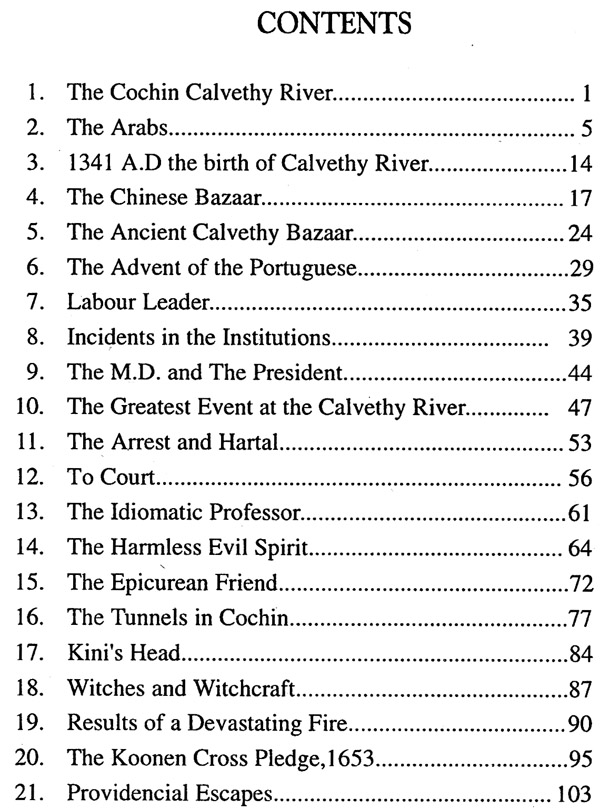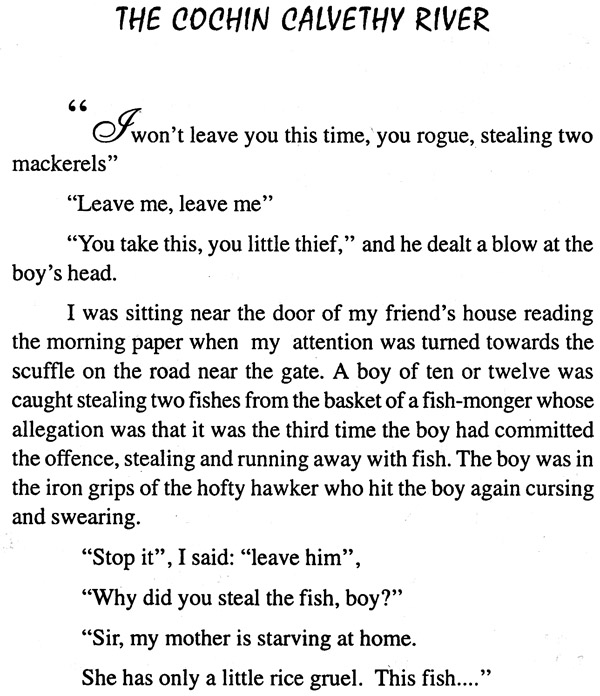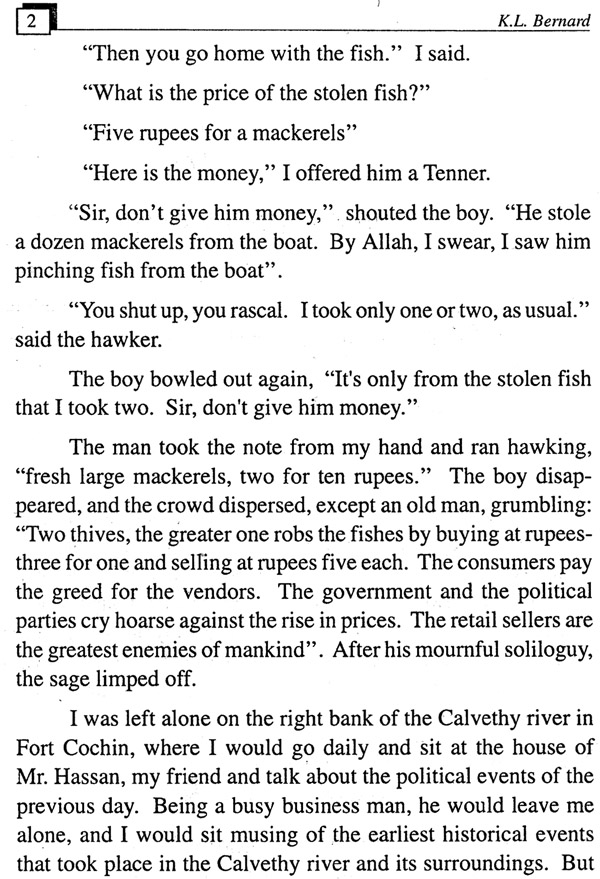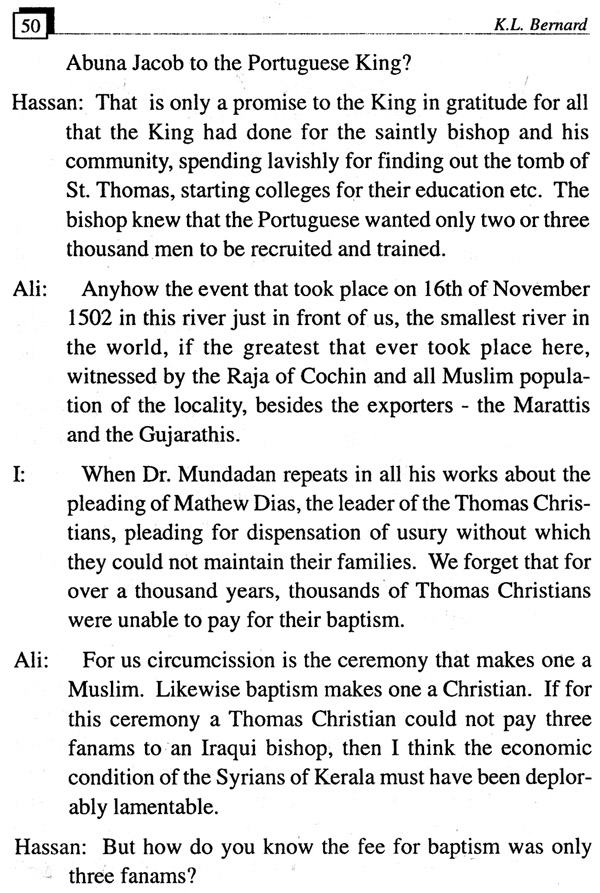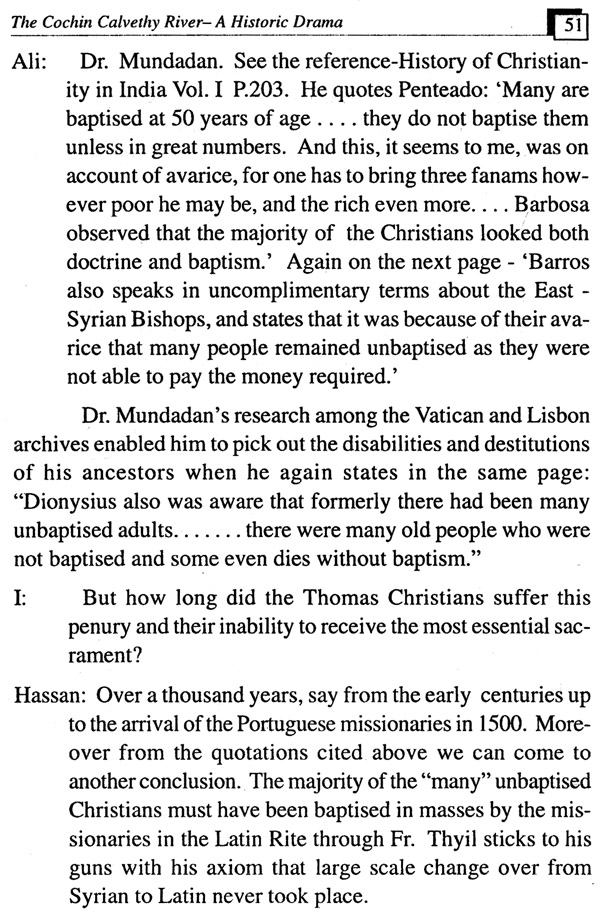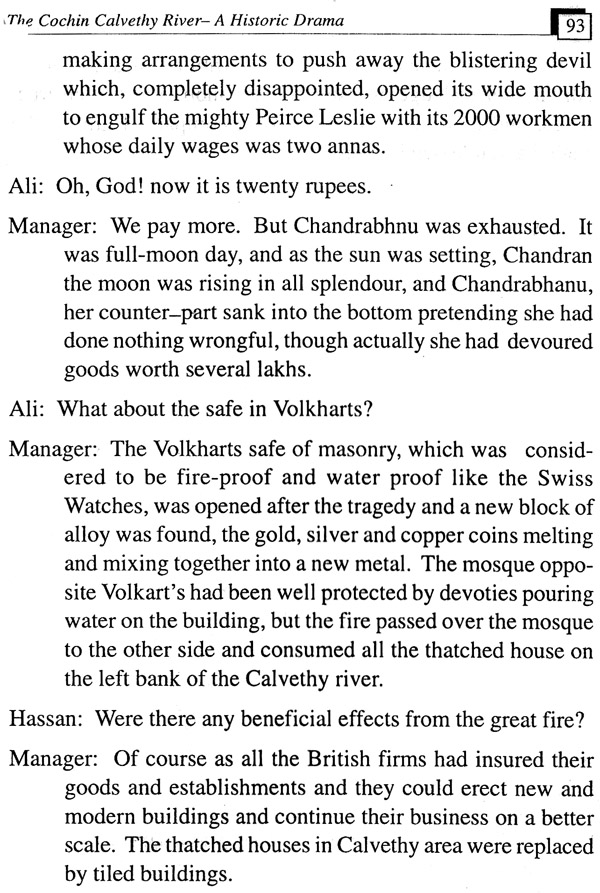
The Cochin Calvethy River: A Historic Drama
Book Specification
| Item Code: | NAX478 |
| Author: | K.L. Bernard |
| Publisher: | Cultural Publications Department, Kerala |
| Language: | English |
| Edition: | 1998 |
| ISBN: | 8186365699 |
| Pages: | 118 |
| Cover: | PAPERBACK |
| Other Details | 8.50 X 5.50 inch |
| Weight | 140 gm |
Book Description
K.L. BERNARD, Born on 13th of October 1902, studied at Santa Cruz High School , St. Thomas College, Trissur and Brennen College, Thalassery.
Began writing short stories for the ‘Indian Story Teller’, Calcutta and 'My Magazine’ Madras (1924-28). Worked in Anglo-Persian oil Company at Abadan in Persia; was teacher at Santa Cruz High School for 27 years. After being dismissed from the school for contesting Muncipal election with Communist Support, he conducted a tutorial College, the first of its kind in Fort Cochin.
He wrote a series of articles in Kerala Times, Mathrubhoomi, Indian Express, Hindu and Malabar Herald about the ancient ship-building industry in Fort Cochin. In 1986 he recieved a grant of Rs 5,000/- from the Indian council of Historical Reserch, New Delhi for his reserch work in History
In 1990 His Holiness the Pope honoured him with ‘Bene Merenti' (Well merited) In 1994 Sargavedi honoured him with ‘Arch bishop Dr. cornelias Manjikkal Award’ He died at the age of 94 years on August 1997.
Published works:-
. Flashes of Kerala History
. History of Fort Cochin
. Kerala Charithra Sambavangal
. The Synod of Diamper
. The Koonen Cross Oath
. Jacomo Fenicio
. The Potuguese in Kerala.
The shores of the river Calvethy of Cochin has signifi- cant geographical influence in the social and political changes of Kerala and it has its impact even in the history of India.
The river Calvethy shoot into prominence when it became the entrance of the natural harbour of Cochin with its extremely rare convenience during the great flood of AD 1341 which made the deathknell of the ancient port of Kodungallur.
After the decline of Kodungallur Port, Arab, Chinese and the Jewish merchants came to the shores of river Calvethy. Followed by them the 16th century onwards the Portuguese, the Dutch and the British came to this region one by one and laid the foundation for the colonial rule. While the western bank of the river Calvethy witnessed European rule, the eastern bank continued under the rule of the King of Cochin.
In 1500 Pedro Alvares Cabral, the representative of King Immanual of Portugal landed at Calvethy and met the Raja of Kochi and gave a message in Arabic letters to build a fort, at Kochi . The Portuguese who made use of the feud between the Raja of Kochi and Samutiri of Kozhikode were able to secure the supremacy in Kochi. The second arrival of Vasco-da-Gama strengthened this.
The Portuguese who desired to dominate the sea-route and world trade subsequently constructed a fort from the western bank of river Calvethy to the sea, on the pretext of protecting the Raja of Kochi against the Zamorin. This was the first European fort in Asia.
In 1663, The Dutch entered Kochi through the river Calvethy, ransacked Fort Immanual and began the era of the Dutch ascendancy in Kerala. In 1795 the Union Jack of the British was hoisted in Kochi on the bank of the river Calvethy when they defeated the Dutch.
Thus in less than five centuries the western and eastern shores of the river Calvethy witnessed the supremacy of three European powers. In course of centuries as a result of the Euro- peans brisk trade, Kochi became a modern port. The emergent . working class who were also part of the development of modern port of Kochi became an organised force. Later in free India, in 1953, the river Calvethy also witnessed the labour strike of the port of Kochi and the historic police firing at Mattanchery.
The foreign travellers who went through the shores of Calvethy like Mahuan, Baros, Barbosa, Caspes Correah and W.T. Venn had already recorded what they had seen. They have stated that the place called ‘Sandi’ on the south of Calvethy was an Arab trading centre and on the western bank of the river Calvethy there were the settlements of Chinese traders and Buddhaviharas. They also described the wars and other events of historical importance occured on the banks of river Calvethy.
**Sample Pages**
